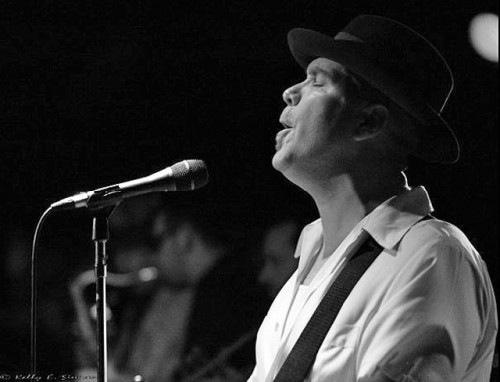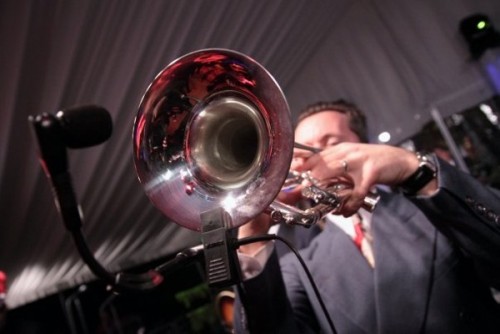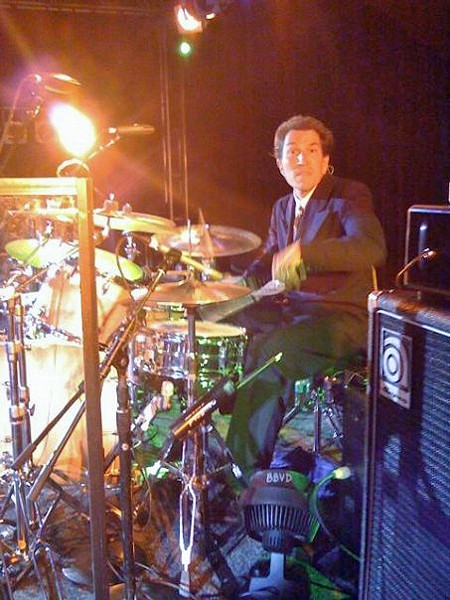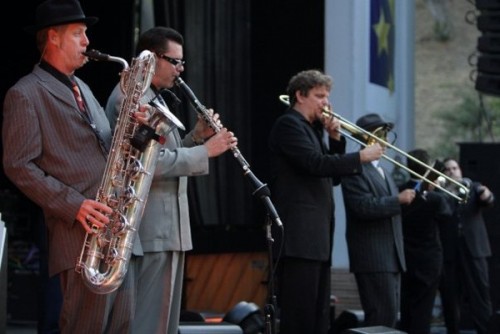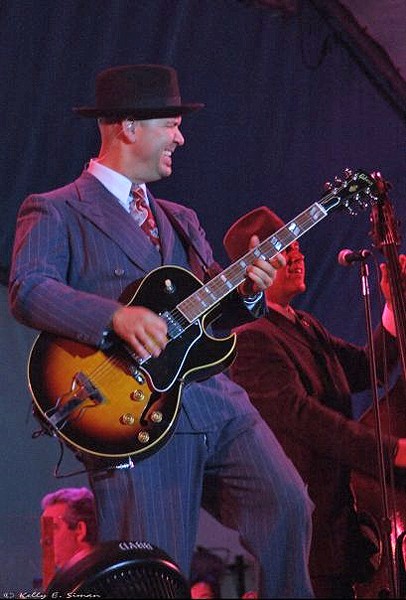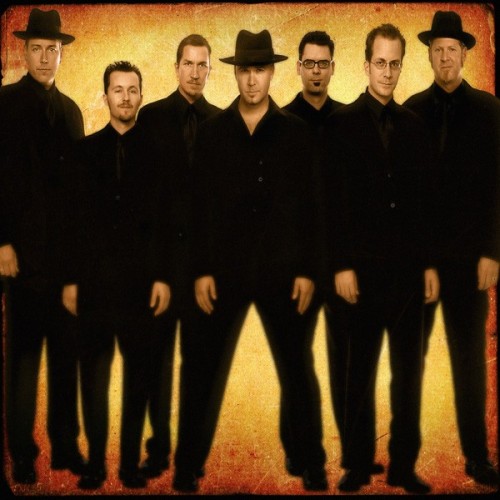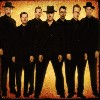Big Bad Voodoo Daddy Swings into the Berkshires
Retro Band Chooses Great Barrington to Kick Off National Tour
By: Larry Murray - Sep 12, 2009
Before there was rock, there was swing. Sometimes called boogie woogie, or zoot suit music, it was music that made you move and feel alive, it had a real beat, and above all it was hot, loud, and nonstop. Even so it has had its detractors. Growing up in the 1930-40's many youngsters weren't "allowed" to listen - or dance - to it. That didn't stop it from catching on, and so it grew, attracting followers and fans like flies to honey.
And it hasn't stopped yet. Last night thanks to Big Bad Voodoo Daddy (BBVD) we all got to be retro hep cats and cool daddies again as we shook out the blues and jived to the swing.
Swing music began in the 1920's and had a revival in the 1990's, led by bands like BBVD and the Cherry Poppin' Daddies which delivers a somewhat more satirical take on this genre. Last night filling the Mahaiwe Performing Arts Center in Great Barrington, there were fans from both eras, and plenty of folks in between, in the audience. They clapped, they sang along, and then they cheered for more when the show was supposed to end, and brought the band back for a second helping. No doubt this exhausted audience slept well too, the happy sleep of the totally satisfied. It was a night to remember, one that should be repeated in the future.
The Mahaiwe was the first stop on the band's latest national tour. Its purpose, in part, is to promote their latest album, How Big Can You Get, a tribute to the great Cab Calloway. Judging from last night's response, longtime fans of BBVD, dubbed "America's favorite little big band" in other cities won't be disappointed as the tour reaches them.
The septet has grown into nine members who easily filled the Mahaiwe's large stage with music, movement and magic. Each and every member of the band is a master of his instrument. Using an array of authentic period techniques, mutes, hats and tricks, they were able to demonstrate why this music continues to exert such a hold on so many millions of fans.
Now in its 16th year, with more than eight albums to its credit, BBVD on stage is as fresh as if they just emerged from months of creative ferment. They delivered a performance that was part rowdy mischief, part nostalgia, but mostly a celebration of superb musicianship and genius. It was both uplifting and fun. The lead vocalist Scotty Marris co-founded the group with drummer Kurt Sodergren in southern California when they were much younger. Scotty was in great voice, and Kurt never missed a beat.
Sogergren's vocals were combined with his energetic guitar playing, and when not in the spotlight, he made sure the audience knew that each soloist was special, and they were, the applause at times was almost nonstop. He also acted as narrator, taking us back to the Cotton Club for a history of Cab Calloway, before launching into such classics as The Jumpin Jive, Hey Now, Hey Now and How Big Can You Get. During the few slower numbers, like Minnie the Moocher, the band didn't seem to let up in intensity, they just slowed the pace. A little.
The energy level was so high I was temped to roll up the rug in the aisle of the Mahaiwe and start dancing. They shook the rafters of that venerable old theater, too. At once point, a gel from one of the stage lights apparently was loosened from its frame and came fluttering down to land at the feet of the bass player.
Kudos go to the sound technicians, for while it was possible to hear this group in all its live glory, never once did the sound distort or overwhelm the players themselves. What we heard were the shimmering notes of a hot band that really didn't need much help with amplification. They could hold their own in a great acoustic environment like the Mahaiwe.
The brass section had two trumpeters, Andy Bonsera and Glen "The Kid" Marhevka. Both were phenomenal. Trombonist Alex Henderson's initial solo drove the audience crazy, and only got better from that point on. The baritone sax Andy Rowley was unbelievable and with his fan club sitting directly in front of me was encouraged to explore new heights. On drums was Kurt Sodergen, whose variations were so extensive most of the band left the stage for a break while the audience was mesmerized. (The nearly two hour show was delivered without an intermission.) Pianist Joshua Levy and bassist Dirk Shumaker also got their turns, as did Tenor Sax Karl Hunter, each one both a master of his instrument and of the many unusual playing tricks and techniques developed during this chapter in American music history.
During the course of the evening, Big Bad Voodoo Daddy covered not only Cab Calloway, but the earlier period of 1920's swing - and then brought us right along into the 1950's. It was then that the form changed and evolved into early rock 'n roll. In addition to swing, we heard Dixieland, big band and jazz. Go Daddy-O and King of Swing were well chosen songs that allowed the players to strut their stuff. Some of BBVD's original songs have even passed into the great American songbook. Thanks to groups like BBVD the form still lives. You have to search it out, but the effort is worth it. Young people still fall in love with it the moment they hear it, though it's hard to get through with all the commercial music interests vying for their attention and dollars.
The decades of the 1920's to 1950's are a rich period of American music. Thanks to the the Mahaiwe and its Friends Program for letting us relive this glorious period before the sands of time obscure it once again. It was a refreshing change to the mediocrity delivered by commercial radio and tv. Long live melody. Long live lyrics. Long live swing. You can find wonderful samples of the music of Big Bad Voodoo Daddy on You Tube. There is even a segment showing the band performing on Dancing with the Stars, complete with some great swing dance.
Imagine. Music that makes you smile and feel good. Now there's a concept.

